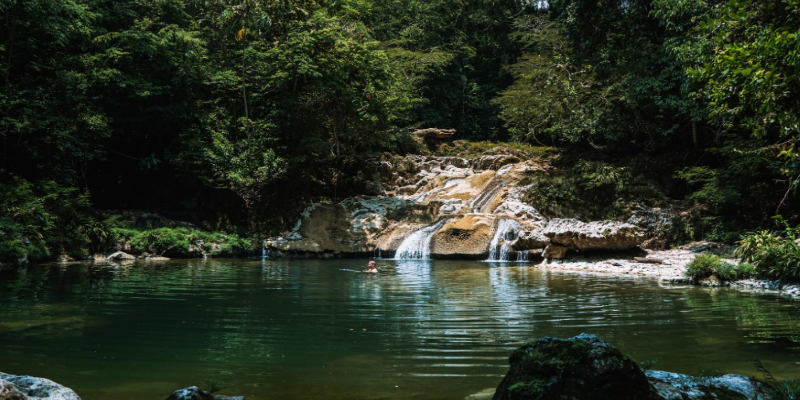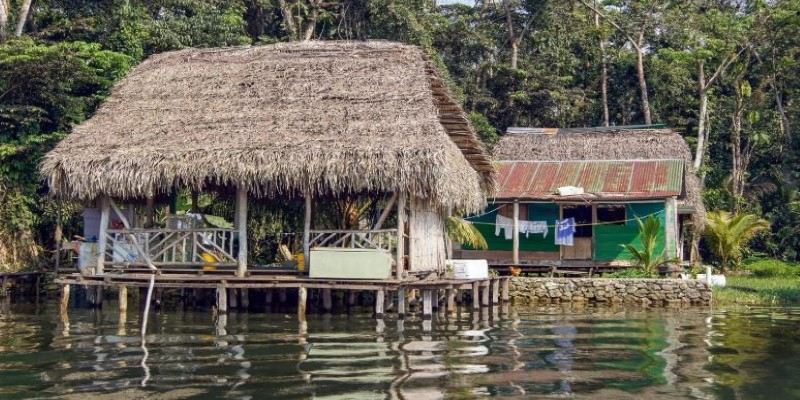The Untold Beauty of Guatemala’s Caribbean Coast in Photos
Imagine a place where the warm Caribbean breeze meets the rhythm of Afro-Caribbean beats, where jungles are as alive as the vibrant cultures that call this coast home. Welcome to Guatemala’s Caribbean Coast, a stunning yet often overlooked paradise that feels worlds apart from the rest of the country. Here, the vibrant town of Livingston pulses with life, nestled against lush landscapes and pristine beaches.
Rio Dulce winds through towering cliffs and secretive waterways, giving one a glimpse into a world that has never been touched by time. From the hidden waterfalls to quiet, unspoiled beaches, this coast is a story waiting to be told in every photograph as it captures the beauty, culture, and serenity of this tropical haven.
The Gateway to the Coast: Livingston, Guatemala
The journey to Guatemala's Caribbean starts in the bustling town of Livingston. This one is located right at the mouth of the Rio Dulce and can only be reached by boat. That, in itself, sets the tone for what lies ahead—life flows like a river here, and the tide dictates the beat. As boats approach the town, vibrant wooden houses come into view, painted in bright blues, reds, and yellows, standing against the lush green backdrop of the jungle.
Livingston is home to the Garifuna people, an Afro-Caribbean community with deep roots in the region. Every street carries the pulse of their culture, from the rhythmic beats of punta music to the smell of freshly made tapado, a rich seafood stew simmered in coconut milk. Photographs of Livingston evoke an energy about this place-children playing by the docks, fishers casting their nets in sunrise, elders congregating on the porches to share tales in a mishmash of Spanish, Garifuna, and Q’eqchi’ Maya.
While the heart of town is vibrant and bustling, the coastline spreads to silent coves and virgin beaches. The gem Playa Quehueche lies within easy reach by boat; there, the Caribbean meets the jungle. The contrast of turquoise waters against the dark greens of the mangroves creates a breathtaking view and defines the region's raw beauty.
The Serene Waterways of Rio Dulce
Leaving Livingston behind, the journey inland leads into Rio Dulce, a river that feels like a hidden world of its own. The moment the boat enters the river’s mouth, the temperature seems to drop, and the dense jungle closes in. Towering limestone cliffs rise from the water, covered in vines and trees, creating a scene that feels ancient and untouched. This is a place where nature dominates, and human presence feels small in comparison.

The riverbanks are dotted with wooden homes built on stilts, and their reflections are perfectly mirrored in the calm waters. These floating villages, where families travel by canoe, add a quiet, dreamlike quality to the landscape. A photo of Rio Dulce often captures this stillness—the soft mist rising at dawn, a lone fisherman paddling his canoe, or the brilliant flash of a toucan taking flight.
One of the highlights of this journey is the famous Castillo de San Felipe, a historic Spanish fort that stands where the river meets Lake Izabal. Built in the 17th century to protect against pirates, the fort now sits in peaceful surroundings, a reminder of the days when these waters were a battleground. Photos of the fortress, with its weathered stone walls and view over the lake, transport viewers to a time when wooden ships sailed these waters in search of riches.
Further along the river, Finca El Paraíso offers another spectacular sight—a hot waterfall cascading into a cool jungle pool. Steam rises where the warm and cold waters meet, creating an ethereal effect that makes this spot feel almost unreal. Photographs here capture the essence of Rio Dulce’s hidden treasures—untamed, surprising, and utterly beautiful.
The Coastal Escape: Belize Border and Beyond
The Caribbean side of Guatemala extends toward the Belizean border, where a series of small islands and coastal villages offer another perspective on the region’s charm. Punta de Manabique, a protected wildlife reserve, is one of the last truly untouched coastal areas. The beaches here are pristine, lined with coconut palms, and home to diverse wildlife, including sea turtles and manatees.

This is the part of Guatemala where the Caribbean shines brightest. The beaches are quieter than those found further north, making them ideal for those who seek solitude in nature. The water is crystal-clear, reflecting the sky in shades of blue that shift with the light. A photo of Punta de Manabique often tells the story of pure isolation—empty shores, endless waves, and the occasional wooden fishing boat cutting across the horizon.
For those looking for a final glimpse of the Caribbean before crossing into Belize, the village of Puerto Barrios offers a last taste of Guatemala’s coastal life. The town itself is more functional than picturesque, serving as an important port, but it provides an authentic look at the working side of the coast. Fishing boats dock along the piers, locals gather in open-air markets, and street vendors sell fresh coconut water to travelers passing through. A snapshot of Puerto Barrios captures this everyday vibrancy—a place where the sea isn’t just scenery but a way of life.
Conclusion
Guatemala’s Caribbean Coast is a hidden gem, offering a unique blend of culture, nature, and serenity. From the lively streets of Livingston to the tranquil waters of Rio Dulce and the untouched beauty of Punta de Manabique, every part of this region tells a captivating story. The coast’s vibrant Garifuna culture, lush jungles, and pristine beaches create an unforgettable experience for those who visit. Through both photos and firsthand experiences, the essence of this paradise shines—inviting travelers to connect with its beauty and heritage in a way that’s both enriching and truly remarkable.










